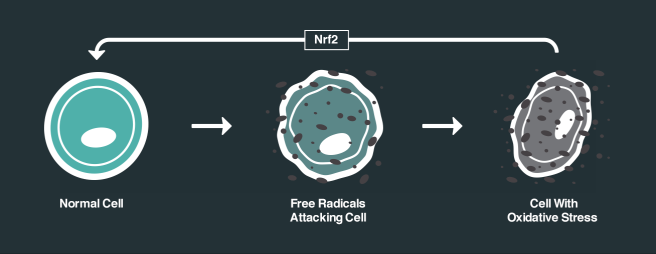|
# # # # At the end of each month the SoPD writes a post which provides an overview of some of the major pieces of Parkinson’s-related research that were made available during April 2023. The post is divided into 10 parts based on the type of research:
# # # # |
So, what happened during April 2023?
In world news:
April 4th – The Intergovernmental Panel on Climate Change (IPCC) releases the third and final part of its Sixth Assessment Report on climate change, warning that greenhouse gas emissions must peak by 2025 at the latest and decline 43% by 2030, in order to limit global warming to 1.5 °C (2.7 °F – click here to read more about this).
April 13th – COVID-19 pandemic: The number of confirmed cases exceeds 500 million worldwide.
April 15th – Nuclear power in Germany ends after 50 years, with the closure of the final power plants.
April 20 – SpaceX’s Starship rocket, the largest and most powerful rocket ever built, is launched during a flight test from a base in Boca Chica, Texas. It explodes four minutes after launch:
April 26th – The Bank of England’s top economist Huw Pill (who earns £180,000 per year, compared to a UK average of £35,000) told a podcast in the US that there was a “reluctance to accept that, yes, we’re all worse off and we all have to take our share” (I should apply for a job at the BoE if this is the kind of wisdom and leadership that is required – Click here to read more about this).
In the world of Parkinson’s research, a great deal of new research and news was reported:
In April 2023, there were 887 research articles added to the Pubmed website with the tag word “Parkinson’s” attached (3640 for all of 2023 so far). In addition, there was a wave to news reports regarding various other bits of Parkinson’s research activity (clinical trials, etc).
The top 5 pieces of Parkinson’s news
1. A biomarker for Parkinson’s?:
Researchers with the University of Pennsylvania Perelman School of Medicine and others, with funding from the Michael J. Fox Foundation for Parkinson’s Research, published results demonstrating an alpha-synuclein seed amplification assay that shows promise for early detection of Parkinson’s (Click here to read more about this and click here and here to read the summary of the research).
2. Not just a lysosomal enzyme:
Yesterday: Parkinson’s-associated GCase is a lysosomal enzyme
Today: Researchers report that GCase is also imported into mitochondria & interacts with mitochondrial chaperones & proteases, influencing energy metabolism in cells (Click here to read more about this and click here to read an SoPD post on this research).
3. Preclinical research from Roche for experimental GCase therapeutic:
Researchers at Roche present the targeting of neuronal lysosomal dysfunction caused by Parkinson’s-associated β-glucocerebrosidase deficiency with an enzyme-based brain shuttle construct. The agent rescued lysosomal function in the brain of a mouse model of Gaucher’s disease (Click here to read more about this).
4. Now you see what UCB are doing?:
One of the leading experimental small molecule inhibitors of alpha synuclein for Parkinson’s is UCB0599 (currently being clinically tested in the large Phase 2 trial). Now UCB researchers present high-resolution structural data on its plausible mechanism of action (Click here to read more about this).

5. Fatty acid nitroalkene in models of Parkinson’s:
Researchers report on the in vitro & in vivo neuroprotective actions of a fatty acid nitroalkene in models of Parkinson’s. It activated Nrf2-regulated gene expression & inhibited NOX2 & LRRK2 hyperactivation, providing neuroprotection (Click here to read more about this).

Articles of general interest
- “It is indisputable that food has a huge impact on mental & physical health. With the convergence of public & private initiatives promoting the centrality of food & diet for improving health, the time is ripe for clinical testing…” (Click here to read more about this).
- An amazing open access resource from the Michael J Fox Foundation – their quarterly Parkinson’s Priority Therapeutic Clinical Pipeline Report is now openly available – must read! (Click here to read more about this).
- A short update on new formulations for Parkinson’s (Click here to read more about this).
Basic biology news
- “This work adds to increasing evidence that Syk is a key regulator of the microglial contribution to neurodegenerative disease & suggests that Syk inhibitors may be used to prevent excessive microglial phagocytosis of synapses & neurons” – Parkinson’s (Click here to read more about this).
- New data suggest the involvement of abnormal regulation of lysosomal transport in the LRRK2-mediated pathogenesis of Parkinson’s (in a Rab12-RILPL1-dependent manner – click here to read more about this).
- New research finds increased histaminergic innervation of the entopeduncular nucleus in the mouse model of Parkinson’s; Activation of postsynaptic H2R regularizes neuronal firing patterns & ameliorates parkinsonism-associated motor dysfunction (Click here to read more about this).
- Proviral Integration Moloney-2 (PIM2) promotes cell survival via inhibiting formation of reactive oxygen species (ROS) in the brain; Now researchers demonstrate neuroprotection in models of Parkinson’s (Click here to read more about this).
- Environmental context-dependent activation of dopamine neurons (via putative amygdala-nigra pathway) in macaques; The amygdala may provide an additional source (context) of learning to basal ganglia circuits; Yay for optogenetics (Click here to read more about this).
- New research finds that Parkinson’s-associated ATP13A2/PARK9 functions as a lysosomal H+,K+-ATPase, contributing to acidification & α-synuclein degradation in lysosomes (Click here to read more about this).
- New biorxiv manuscript – using an in vivo CRISPR-Cas9 screen – identifies p53-mediated apoptotic cell death as major contributor to dopamine neuron loss & uncovered a causal link of TNFa-NFκB signaling in limiting cell survival (Click here to read more about this).
- Researchers generate transcriptomic & epigenomic landscapes of the substantia nigra by profiling >113k nuclei obtained from controls & Parkinson’s cases; Uncovers cell type–specific dysregulations in cis-regulatory elements & associated potential PD genes (Click here to read more about this).
- Early-onset Parkinsonism-associated synaptojanin1 reported to modify endolysosomal parameters in cultured ventral midbrain neurons; Synj1 deficient neurons exhibit axonal vulnerability to endolysosomal defects (Click here to read more about this).
- New research finds multi-regional alterations in glucose and purine metabolic pathways in the Parkinson’s dementia brain; “Unexpectedly, the cerebellum also shows a high number of metabolic changes” (Click here to read more about this).
- NOD-like receptor NLRC5 promotes neuroinflammation & inhibits neuronal survival in Parkinson’s models; NLRC5 mRNA levels are decreased in the blood of 19 PD patients (vs 18 controls – click here to read more about this).
- New research finds suppression of Relish in the intestinal midgut of pink1-mutant flies restores mitochondrial function & is neuroprotective; Gut–brain axis modulates neurotox. in a fly model of Parkinson’s (Click here to read more about this).
Disease mechanism
- New research illustrates “the therapeutic potential of targeting UPR-dependent gene expression programs as a strategy to ameliorate Alzheimer’s features & sustain synaptic function”; Potential for X-Box binding protein 1 (XBP1) in Parkinson’s as well? (Click here to read more about this).
- Cntnap4 partial deficiency exacerbates Parkinson’s-associated α-synuclein pathology through astrocyte–microglia C3-C3aR pathway; C3aR antagonist (SB290157) rescue the aggravated α-synuclein pathology resulting from Cntnap4 lacking (Click here to read more about this).
- New research use dynamic nuclear polarization & orthogonally labelled samples to demonstrate interactions between Parkinson’s-associated α-synuclein aggregates in complex with the small molecule alpha synuclein inhibitor anle138b (Click here to read more about this).
- New research finds glial cells convert very-long-chain fatty acids into sphingosine-1-phosphate (S1P); Excess S1P causes neuroinflammation, NF-κB activation, & macrophage infiltration; Bezafibrate & fingolimod synergize to ameliorate symptoms a model of Multiple Sclerosis (Click here to read more about this).
- New data suggests that Ca2+–calmodulin–calcineurin signaling modulates Parkinson’s-associated α-synuclein transmission; Cyclosporin A treatment reduced synuclein pathology in PFF-injected WT mice (Click here to read more about this).
https://t.co/kBCLSsuSHPParkin regulates microglial NLRP3 & represses neurodegeneration in mouse model of Parkinson’s (Click here to read more about this). - “Venglustat treatment in 2 mouse models of α-synuclein overexpression showed that glucosylceramide synthase inhibition had differential detrimental or beneficial effects on behavior & neuropathology possibly related to brain region–specific effects” (Click here to read more about this).
- New paper investigates T-type & L-type voltage-gated calcium channels in dopamine neurons of 2 transgenic mice (Nurr1-cKO & LRRK2-G2019S – Parkinson’s); Curious differences in alterations occurring in the somata, but not axons (Click here to read more about this).
- Researchers report one week of ambroxol administration after stroke onset in rats reduced ischaemic stroke severity & improved functional outcome in the subacute phase followed by reduced necrosis in the chronic stroke phase (Click here to read more about this).
- New research reports genipin (an iridoid) relieves Parkinson’s-associated α-synuclein toxicity & aggregation in yeast cells & flies; It modulates molecular mechanisms (carbohydrate metabolism, endocytosis, & lipid storage) to protect the cells (Click here to read more about this).
- Researchers evaluate the safety & feasibility of intravenous AAV vector delivery following blood-brain barrier opening with low-intensity focus ultrasound targeting the nigrostriatal system & other brain regions relevant to Parkinson’s patients & primates (Click here to read more about this).
- Researchers perform a high-throughput, proteome-wide peptide screen to identify protein-protein interaction inhibitors of Parkinson’s-associated α-synuclein oligomer levels; Most potent peptide inhibitor disrupts CHMP2B (Click here to read more about this).
Clinical research
- Researchers report that changes in functional connectivity between nucleus accumbens & anterior cingulate cortex precedes apathy in people with Parkinson’s (Click here to read more about this).
- The lessebo effect: the reduction in the magnitude of the effect of an experimental intervention due to the possibility of being allocated to placebo. Researchers observe the lessebo effect in disease modification trials for Parkinson’s (Click here to read more about this).
- “Parkinson’s smokers tended to have fewer deaths from neurologic causes but were significantly more likely to die from smoking-related cancers such as lung cancer”; Conclusion: “Cigarette smoking is not recommended in individuals with PD” (Click here to read more about this).
- Two data sets (#1 from UK Biobank (N=2023 multiple sclerosis cases, 2200 Alzheimer’s, & 3050 Parkinson’s) & #2 from Swedish Twin Registry (230 MS, 885 AD, & 626 PD)) finds an increased risk of infections independent of genetic & familial environmental factors (Click here to read more about this).
- It’s a small study (n=39), but researchers report a peripheral hearing function decline association with dopamine depletion in Parkinson’s, with a significant difference between individuals with left- & right-sided predominant motor symptoms (Click here to read more about this).
- Bio-samples from non-manifesting individuals carrying a pathogenic heterozygous variant in Parkinson’s-associated PARKIN present an altered molecular phenotype related to mitochondrial function; Useful for monitoring possible conversion? (Click here to read more about this).
- New research investigated thyroid [123I]MIBG uptake in patients with Parkinson’s & diabetes, & found severely reduced thyroid [123I]MIBG uptake in diabetes; Larger replication studies required (Click here to read more about this).
- The impact of the COVID19 pandemic on care partners of people with Parkinson’s; data from the Michael J Fox Foundation’s Fox Insight study; N=273; “a substantial proportion of care partners describing increases in burden during the pandemic” (Click here to read more about this).
- New paper explores the feasibility of a commercially available wearable (Garmin Vivosmart 4) & a smart phone application in identification of motor states in Parkinson’s; “Movement state can affect the visibility of PD symptoms” (Click here to read more about this).
- Prospective study of the Norwegian population (2005-2019) finds that β2AR agonists remained inversely associated with Parkinson’s risk after all adjustments; Longer-acting, more lipophilic β2AR agonists=overall strongest association (Click here to read more about this).
- New paper outlines the development & evaluation of a novel, disease- & symptom-specific, self-completed questionnaire, titled “Gut Dysmotility Questionnaire” (GDQ), for screening & monitoring gastrointestinal dysmotility in people with Parkinson’s (Click here to read more about this).
- Periaqueductal grey & spinal cord pathology contribute to pain in Parkinson’s; Outlines pathological pathways involved in the manifestation of pain in PD & highlights potential targets for intervention (Click here to read more about this).
- Routine primary care & UK Biobank data indicates that prediagnostic presentations of falls, psychiatric symptoms & autonomic dysfunction are more strongly associated with dementia with Lewy Bodies than Alzheimer’s & Parkinson’s (Click here to read more about this).
- Small study (n=85), but interesting to look at spirituality in Parkinson’s in a US sample; Greater spirituality & religiosity were associated with less anxiety. Also, younger women with PD showed higher levels of spirituality & religiosity (Click here to read more about this).
- New research finds low-level particulate matter air pollution was NOT associated with increased risk of incident Parkinson’s within a Finnish nationwide population; An inverse association observed for sulphate (& sea salt – click here to read more about this).
- Brainstem neuromelanin & iron MRI reveals a signature for idiopathic (N=39) & LRRK2 (N=24) Parkinson’s cases; “While the SNc was a good discriminator between PD patients & controls, the LC was the structure that best discriminated among PD subgroups” (Click here to read more about this).
- “Even though neurodegeneration with brain iron accumulation (NBIA) & Parkinson’s share similar symptoms, they could be molecularly different entities”; the mechanisms underpinning iron accumulation in PD may not be shared with NBIA” (Click here to read more about this).
- Researchers “observed that the spatiotemporal variability of early Parkinson’s brain network has a specific distribution pattern in brain regions, which can be quantified as the degree of motor & cognitive impairment, respectively” (Click here to read more about this).
- Racial & ethnic differences in health-related quality of life for individuals with Parkinson’s across centers of excellence (Click here to read more about this).
- NPC1 variants are not associated with Parkinson’s, REM-sleep behavior disorder or dementia with Lewy bodies; study involves 3 cohorts of European descent (Click here to read more about this).
- A bidirectional Mendelian randomization study of neurodegenerative conditions & antioxidant biomarkers finds interesting association between Alzheimer’s & decreased levels of retinol; Glutathione peroxidase & uric acid show potential link with Parkinson’s (Click here to read more about this).
- “Urine BMP levels are promising biomarkers for patient stratification & potentially target engagement in clinical trials of emerging targeted Parkinson’s therapies” (Click here to read more about this).
- New research provides “an account of dopamine’s role in the translation of features of motor performance into judgments of effort, & a potential therapeutic target for the increased sense of effort observed across a range of neurologic & psychiatric conditions” (Click here to read more about this).
New clinical trials
- New clinical trial registered: The Dutch Parkinson’s GBA Ambroxol Trial (GREAT study); A randomised, double-blind, placebo-controlled, single center trial involving 80 participants with GBA1-PD, 48 weeks of treatment (Click here to read more about this).
- New clinical trial registered: Bial register a Phase 2 double blind, efficacy, safety & tolerability study exploring the PK/PD of BIA 28-6156 in 237 individuals with GBA1-associated Parkinson’s (the “ACTIVATE study”); 78 weeks of treatment (Click here to read more about this).
- New clinical trial registered (& then withdrawn: sponsor insolvency): 1st-in-human study evaluating safety & tolerability of repeat oral administrations of live biotherapeutics MRx0029 (n=20) or MRx0005 (n=20) in individuals diagnosed with idiopathic Parkinson’s (Click here to read more about this).
Clinical trial news
- New single-blind randomized controlled clinical trial (N=30) finds Nordic walking is a safe & likely useful strategy to slow down cognitive impairment in mild/moderate Alzheimer’s if the results can be replicated in larger study (Click here to read more about this).
- Remember HAL from 2001: A space odyssey? A new paper presents 5 case reports involving gait improvement with use of a wearable cyborg HAL trunk unit for Parkinson’s patients; 3 participants improved (Click here to read more about this).
Conferences/lectures
- The 6th World Parkinson’s Congress will be held in Barcelona (Spain) between the 4th – 7th July. This event only happens once every 3 years, and brings together researchers, clinicians, patients, and the broader Parkinson’s community – a truly unique scientific meeting with something for everyone.
- The 2023 Grand Challenges in Parkinson’s conference will be held on the 27th & 28th September at the Van Andel Institute in Grand Rapids, Michigan. The theme this year will be “Pathophysiological Mechanisms to Therapeutics” and the list of speakers is excellent.
Other news
- Neuronascent announces plans for a potential Phase II trial of its orally active DYRK1A inhibitor, NNI-362 in Parkinson’s in H1 2024 (Click here to read more about this)
- Herantis Pharma announces first healthy volunteer dosed in the Phase 1a clinical study for their Parkinson’s drug candidate, HER-096 (a blood-brain barrier penetrant CDNF mimic – click here to read more about this).
- Sinopia Biosciences selects lead clinical candidate (SB-0110) & secures funding to advance into the clinic for Parkinson’s; Agent has “unique & potentially transformative pharmacology for treating both the symptoms of PD” & dyskinesias (Click here to read more about this).
- Inhibikase announces that they will employ the new Amprion & Michael J Fox Foundation’s alpha synuclein seed amplification assay biomarker in its ongoing Phase IIa trial targeting untreated Parkinson’s (Click here to read more about this).
- “The SYNTap test was granted breakthrough-device designation by the U.S. FDA in February 2022. Physicians can now order the test for people exhibiting Parkinson’s symptoms, though it’s currently not covered by insurance” (Click here to read more about this).
Review articles/videos
- Rigidity in Parkinson’s: Evidence from biomechanical & neurophysiological measures (Click here to read more about this).
- A new review on redox dysregulation as a driver for DNA damage & its relationship to neurodegenerative conditions like Parkinson’s, Alzheimer’s & ALS (Click here to read more about this).
- A pretty epic new review explores the structural mechanisms of mitochondrial quality control mediated by Parkinson’s-associated PINK1 & parkin; “Future research will focus ways to upregulate the pathway for treatment of PD” (Click here to read more about this).
- Interesting perspective piece on the state of Parkinson’s population-wide registries in the USA – exploring current & future opportunities; Proposes recommendations based on previous experience. There is nothing like this in the UK… just saying… (Click here to read more about this).
- A very useful overview of the intracellular complement system – summarizing current knowledge about “the complosome” across healthy cells & tissues, & highlighting contributions from dysregulated complosome activities to disease (Click here to read more about this).
- Clinical trials for cognition in Parkinson’s – researchers ask where are we & how can we do better? Includes an analysis of recent clinical trials with cognitive outcomes in PD on the ClinicalTrials-gov website (Click here to read more about this).
- New review revisits the roles of reactive astrocytes in neurodegeneration, including in the context of Parkinson’s (Click here to read more about this).
- A review on biologic staging systems for Parkinson’s (Click here to read more about this).
- Researchers provide a timely review of the epidemiological, pathophysiological, & clinical features of LRRK2-associated Parkinson’s, & discuss the arising therapeutic approaches targeting LRRK2 & possible future directions for research (Click here to read more about this).
* * * * * * * * * * * *
And there it is, just some of the highlights from April 2023 – another very busy month of Parkinson’s research. Hopefully there will be bits and pieces of interest for everyone in the list. Much of the material used here was collected from the Science of Parkinson’s Twitter feed (and there is a lot more posted there each day).
Any thoughts/feedback would be greatly appreciated (either in the comments below, or contact me directly).
And now: on to May!!!
 All of the material on this website is licensed under a
All of the material on this website is licensed under a
Creative Commons Attribution 4.0 International License
You can do whatever you like with it!
EDITOR’S NOTE: The author of this post is an employee of Cure Parkinson’s, so he might be a little bit biased in his views on research and clinical trials supported by the trust. That said, the trust has not requested the production of this post, and the author is sharing it simply because it may be of interest to the Parkinson’s community.
The information provided by the SoPD website is for information and educational purposes only. Under no circumstances should it ever be considered medical or actionable advice. It is provided by research scientists, not medical practitioners. Any actions taken – based on what has been read on the website – are the sole responsibility of the reader. Any actions being contemplated by readers should firstly be discussed with a qualified healthcare professional who is aware of your medical history. While some of the information discussed in this post may cause concern, please speak with your medical physician before attempting any change in an existing treatment regime.
In addition, many of the companies mentioned in this post are publicly traded companies. That said, the material presented on this page should under no circumstances be considered financial advice. Any actions taken by the reader based on reading this material is the sole responsibility of the reader. None of the companies have requested that this material be produced, nor has the author had any contact with any of the companies or associated parties. This post has been produced for educational purposes only.

























